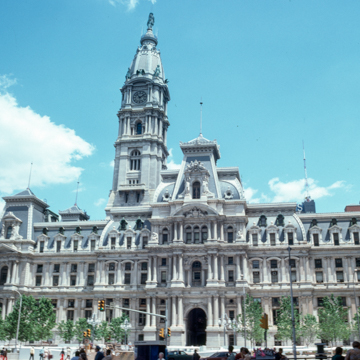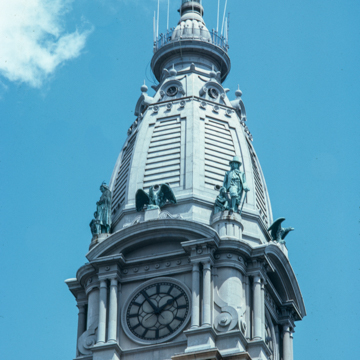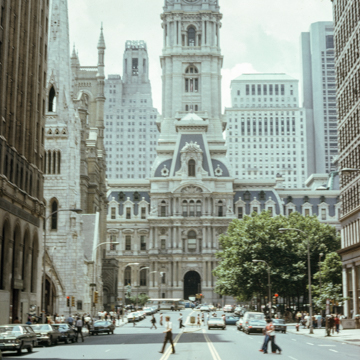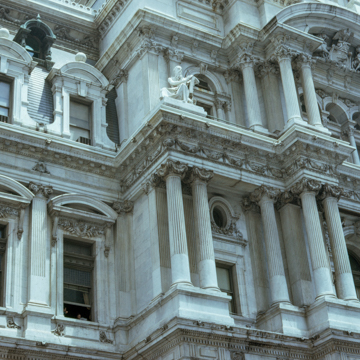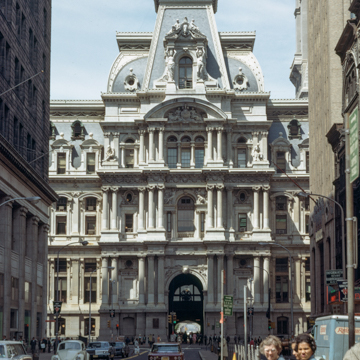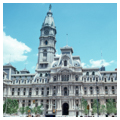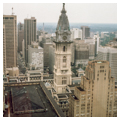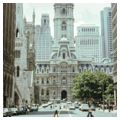After the removal of the court and meetinghouse in 1707, Centre Square (now Penn Square) languished for most of the next century until it was made the site of the pump house for the waterworks designed by Benjamin Henry Latrobe (1799–1801; 1827 demolished). Today, thanks to the move of the city hall from Independence Square, William Penn's original plan to base the seat of government in Centre Square is again a reality. From its row house–sized bronze statue of William Penn, by Alexander Milne Calder, at the top of its 547-foot-tall tower, City Hall is heroic in every way. The largest government building in the world of its day, its marble-skinned and columned exterior, crowned by giant mansard roofs in Second Empire manner, represents the optimism and wealth of industrial Philadelphia at the height of its economic boom after the Civil War.
In its abundance of sculptures, it is an encyclopedia of the late-nineteenth-century city, describing the city's psychological worldview in very much the same way that a medieval cathedral expressed the views of its creators. Each facade represents the different races of mankind and their native continents: the east is Asia; the south, Africa; the west, the Americas; and the north, Europe. The pediments of the central dormers in the mansard are supported by caryatids that depict the races of the world—Asian, African, Native American, and European—who are joined by emblematic animals of these continents. In the hall at the base of the great tower, the races and animals reappear, laboring to support the granite columns, an apt representation of the taxpayers who built the pile and who now struggle to pay for its monumentally inefficient government. Because Samuel Perkins, president of the building committee, liked cats, representations appear everywhere on the prowl in the building, especially in the south portal. A bust of architect John McArthur Jr. is in the south stairwell, while an image of City Hall with its 1876 version of the tower, which grew larger in the course of construction, appears on the wall below the north stair of the east portico. Above the great portals, busts describe the internal functions: Michelangelo's Moses signifies the law courts of the south facade; Benjamin Franklin denotes the commercial offices of the city on the east; William Penn symbolizes the administrative offices on the north; and a figure of Sympathy marks the west portal where police vans once brought prisoners to court and took them away. Bronze figures at the base of the cast-iron portion of the tower represent the early residents, Indians and Swedes; the naturalistic ornament represents the local flora and fauna.
The archways provide access to one of the city's finest spaces, the interior courtyard that is more simply detailed in a sixteenth-century French manner. At each corner, spectacular cantilevered granite stairs provide access to tiled corridors with granite floors that have survived the not so benign neglect of a century









